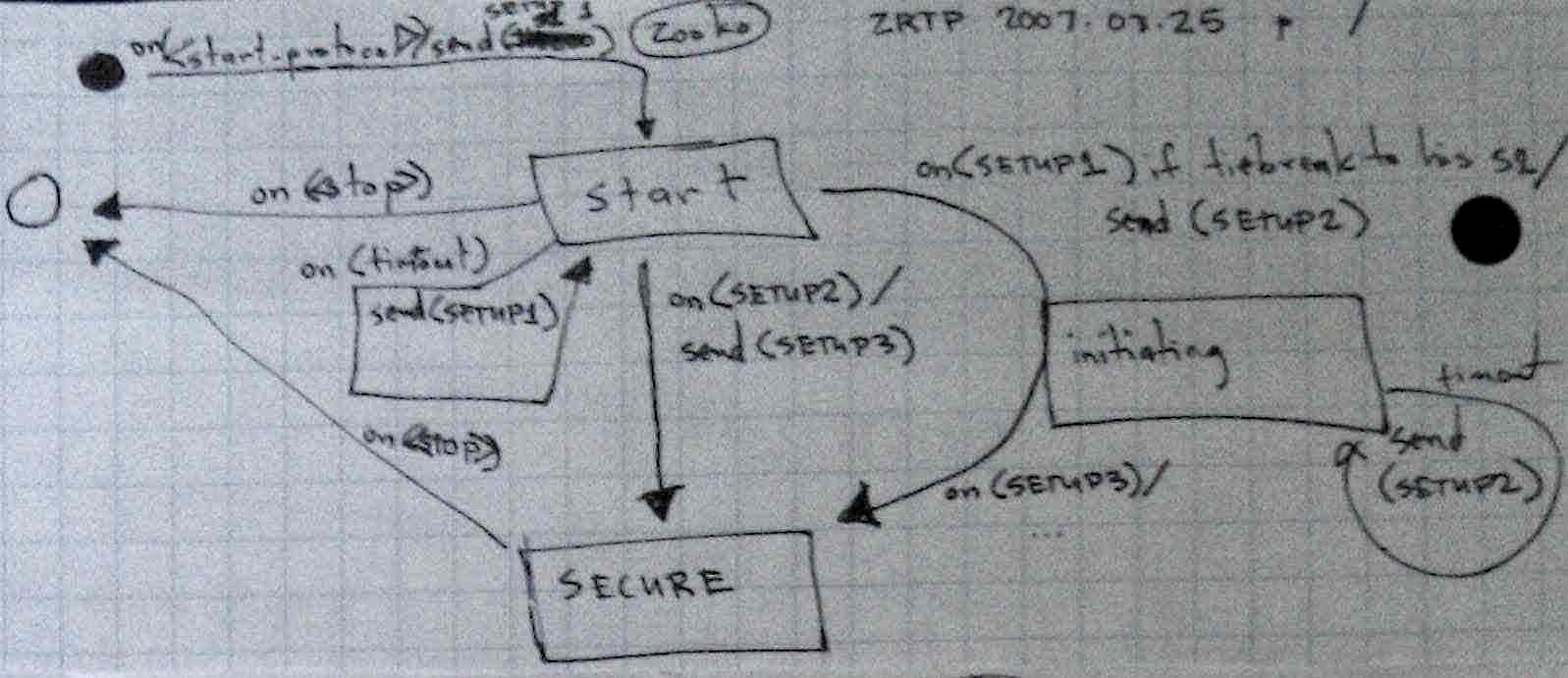July 28, 2011
ZRTP and the H3 experience
Zooko writes a case study in support of H3,
there is only One Mode, and it is Secure:
When Phil Zimmermann and I were designing ZRTP, we had a complete protocol design for the secure stream and a working prototype, and then we decided, against my better judgment, to add the feature of users being able to switch back and forth between secure mode and insecure ("clear") mode. (This was before [Jon Callas] got involved in the protocol-level details of the ZRTP that eventually became [RFC 6189]. I think it was in 2006.)

This caused the state transition diagram (which lived on a piece of 8.5x11 paper pinned to the wall above my screen) to balloon from, if I recall correctly, approximately five states with around ten transitions to approximately ten states with closer to twenty transitions. We then added and removed several successive bugs in the protocol or in the prototype implementation over the next few months, all of which were in this newly added feature of the protocol.
Phil was concerned about our schedule and frustrated by the delay. He remarked that if he had known adding "clear mode" was going to cost so much development time he wouldn't have done it.
Later, the existence of the insecure mode again added complexity when we wanted to add support for PBXes and call transfer, and instead of working out how to handle call transfer from one state (secure mode), we had to work out how to do it from several states—secure mode, clear mode, the state where you've indicated that you wish to switch from secure mode to clear mode but the other party hasn't yet ACKed, and the state where you've indicated that you wish to switch from clear mode to secure mode but the two parties haven't finished negotiating the new session. (By this time I had left the ZRTP project to begin work on what eventually became Tahoe-LAFS, and my contribution to the PBX/call-transfer issue was merely a little bit of consulting.)
I think that in retrospect ZRTP would have been better if we had followed Grigg's H3.
Hm, digging around in my keepsakes cabinet, I unfortunately do not find the original state transition diagram that I mentioned above, but I do find an artifact that I wrote a few months later—a sketch of a protocol that I called "ZRTP lite" which was ZRTP as it existed at that time minus insecure mode, algorithm negotiation, the "confirm" packet, and the max-retries timeout. The resulting state transition diagram has only three states (five if you count the beginning state—before the phone call has begun—and the ending state—after the call has ended), and only five transitions (counting start and stop).
I never showed this to anyone until now. See attachment.
My next major project after ZRTP was Tahoe-LAFS, and in that project my co-designers and I have adhered to Grigg's H3. We occasionally get requests to add an insecure mode to Tahoe-LAFS and so far we have declined to do so. I could be provoked into posting further musings on that issue. (The fact that we are refusing to accommodate repeated requests from users is certainly a warning flag in my view and deserves careful justification.)
Regards,
Zooko
[RFC 6189] http://zfone.com/docs/ietf/rfc6189.html
Posted by iang at July 28, 2011 06:48 AM | TrackBack